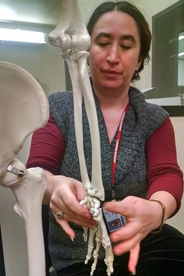Research
Corsets: Male Desire or Female Agency?

When most people hear the word corset, they think of something from the past. However, the recent popularity of waist training has brought corsets back to the forefront of fashion, even if they are no longer called corsets. Waist training has been made popular by some celebrities and makes use of waist trainers, otherwise known as corsets, to reduce the size of one’s waist. The use of corsets has long-term effects on the skeleton—it deforms the ribs and spine in an effort to reduce the size of one’s waist. While the skeletal effects of corseting are well known, academics sometimes disagree on how damaging corseting was to women’s health and why women corseted in the past. This question is precisely the topic of American University student Rebecca Gibson’s dissertation work.
Gibson’s master’s work, which was recently published in NEXUS: The Canadian Student Journal of Anthropology and has been written about in Forbes magazine, came to some surprising conclusions that contradict some long held assumptions about corsetry. The main point of her early findings is that corseted women actually lived longer than average, despite the well-known skeletal deformation of the ribs and vertebrae as a result of corseting. Thus, she concludes that corseting did not have a significantly negative impact on women’s quantity of life. Gibson also addresses the quality of life for these women. Due to depictions of maids using their feet to get corsets sufficiently tight, many people assume corseting was hugely uncomfortable and painful for those who wore them. An analysis of corsets from the Victoria and Albert Collection shows that corsets were well loved and well used. The amount of strain that would have been put on the garment through tightening the laces beyond what the body allowed for would result in a shorter lifespan for the garment—a possibility that the material record does not support.
The material record also does not support the idea that women wore corsets in an attempt to appeal to men or because the patriarchy told them to do so. Several contemporary sources from England between the 1700s and 1900s reveal that men did not necessarily like the look of women with greatly reduced waists. Combined with contemporary letters written by women that support the wearing of corsets, it becomes clear that women exerted their own agency in deciding to wear corsets. That is not to say that all women liked corsets, or did not realize some of the harm they could cause. Rather, the picture is more complex than the common belief that men were the primary instigators of the corseting of women. It is important not to remove female agency from the decisions women were making about their bodies. This early work has proved there is a greater need to analyze what corseting meant in the past, and how it relates to how women are seen and treated in contemporary society.
Gibson’s current dissertation work continues to address these concerns. Her current study involves the analysis of 73 skeletons from the St. Brides Lower Churchyard collection held at the Museum of London and approximately 25 skeletons at the Musée de l’Homme in Paris. These collections span the years 1700 to 1900. This current work follows in the footsteps of her previous research by looking at the circular deformity of ribs caused by corseting, along with the vertical and lateral displacement of vertebral elements to accommodate corseting. Her current research is also making use of technology in a way she could not several years ago. Digital 3-D scans of articulated rib cages and individual bones are being taken. These images will contribute to the depth of analysis that can be undertaken and will be included in her dissertation. They will also allow for different more astute morphometric analysis to be undertaken in the future, using advanced computer programs.
Gibson completed her data collection at the Musée de l’Homme in Paris this past summer. If you are interested in her work, her full article on her preliminary study on this topic can be viewed online at journals.mcmaster.ca/nexus/article/view/983/905. NEXUS is an open access journal.